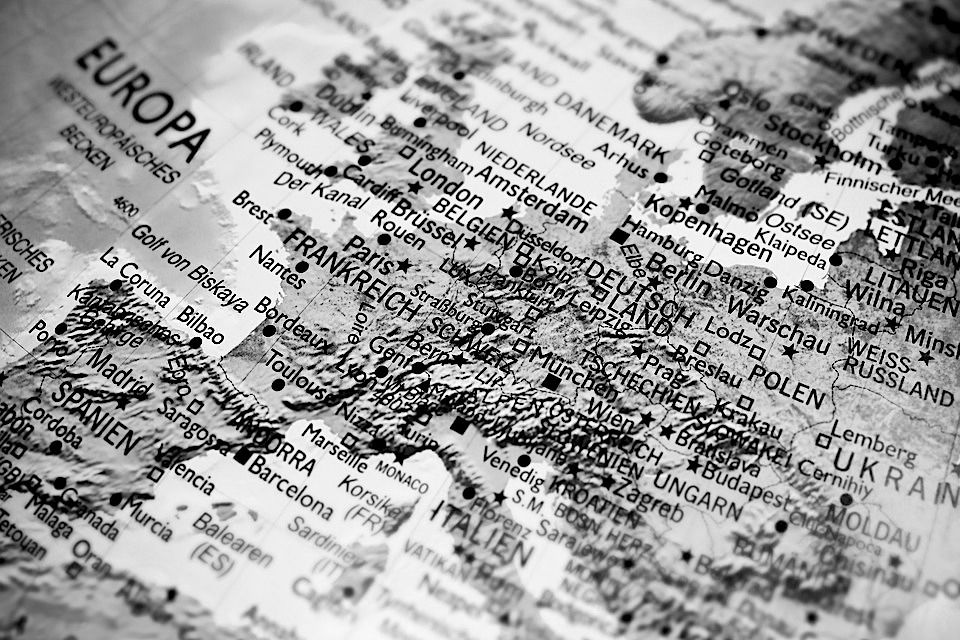Now that the UK has left the European Union, the way VAT is accounted for on trade between British and European businesses is changing, as well as the procedures for importing and exporting both goods and services. Whilst some of the rules will be reflective of those already existing between the UK and non-EU countries, there are some specifics to consider for trade with the EU.
Moving Goods - The Basics
Whether you plan on importing or exporting goods to the European Union, businesses will need to obtain an EORI number. This is a unique identifier used on customs documents, and without one the import/export process may be considerably slower, with the possibility of excess storage costs charged to businesses if goods are held up at customs. If you plan on trading at all with the EU, it is highly recommended to obtain an EORI number. For any imports or exports, customs documents will need to be filled in for CHIEF (Customs Handling of Import and Export Freight) using the Customs Declaration Service. These can be filled in using software (HMRC has provided a list of compatible software), though for businesses who are preparing to do considerable trade with the EU, it may be beneficial to appoint a customs agent as the classifications and rules for customs are complex.
VAT - Imports
For businesses importing goods, the main change from the existing rules for non-EU countries is the introduction of ‘postponed accounting’, which means that import VAT on goods from the EU will be declared and paid via your normal VAT Return, rather than immediately at the border. Other customs and excise duties and tariffs will still need to be paid separately via a monthly duty deferment account, which businesses will need to register with HMRC to open.
For any imported goods up to value of £135, VAT will be collected at the point of sale and declared as UK supply VAT on the VAT Return. For business to business sales up to this value, UK buyers can provide the seller in the EU with their VAT number, and account for the VAT with a reverse charge.
VAT – Exports
Exporting goods to the EU will similarly follow pre-existing rules for exporting goods to non-EU countries, with some minor differences. Businesses will continue to zero-rate their sales to the EU as before, though from 1st of January 2021, the distance-selling thresholds for businesses with a turnover under £70,000 will end.
Another important change is the end of the EC Sales List for UK businesses, who will no longer need to fill this in for any EU sales. However, businesses will be required to retain evidence that their goods have left the UK in line with the pre-existing rules.
VAT – Services
The changes in service supply to the EU are minimal. VAT on provision of services to the EU will be covered by the current ‘place of supply’ rules. For sales to non-business customers this means that VAT will be due in the EU country where the customer resides. You can read more about the changes here.
VAT – Digital Services
For many providers of digital services to the EU, they will have become accustomed to declaring their VAT on EU sales via the UK VAT Mini One Stop Shop (MOSS) Scheme. However, this has now ended in its previous form as the UK no longer has access to this scheme. Businesses making digital sales to the EU will now need to register for a non-Union MOSS Scheme in an EU state to declare their VAT, or alternatively register for VAT in each EU member state in which they trade.
A MOSS scheme must be registered by the 10th day of the following month of the first sale to the EU following the 31st December 2020, so for any January sales for instance, a scheme would need to be registered by the 10th of February to remain compliant. The EU has provided a guide to registering for non-Union MOSS SchemesMOSS Schemes. This will now apply to all providers of digital services, as the previously existing annual threshold of £8,818 of cross-border sales will no longer apply.
Topics
Archive
- 2024
- March 2024 (1)
- January 2024 (1)
- 2023
- December 2023 (2)
- November 2023 (2)
- September 2023 (2)
- August 2023 (1)
- July 2023 (3)
- June 2023 (3)
- May 2023 (2)
- April 2023 (1)
- March 2023 (4)
- February 2023 (2)

